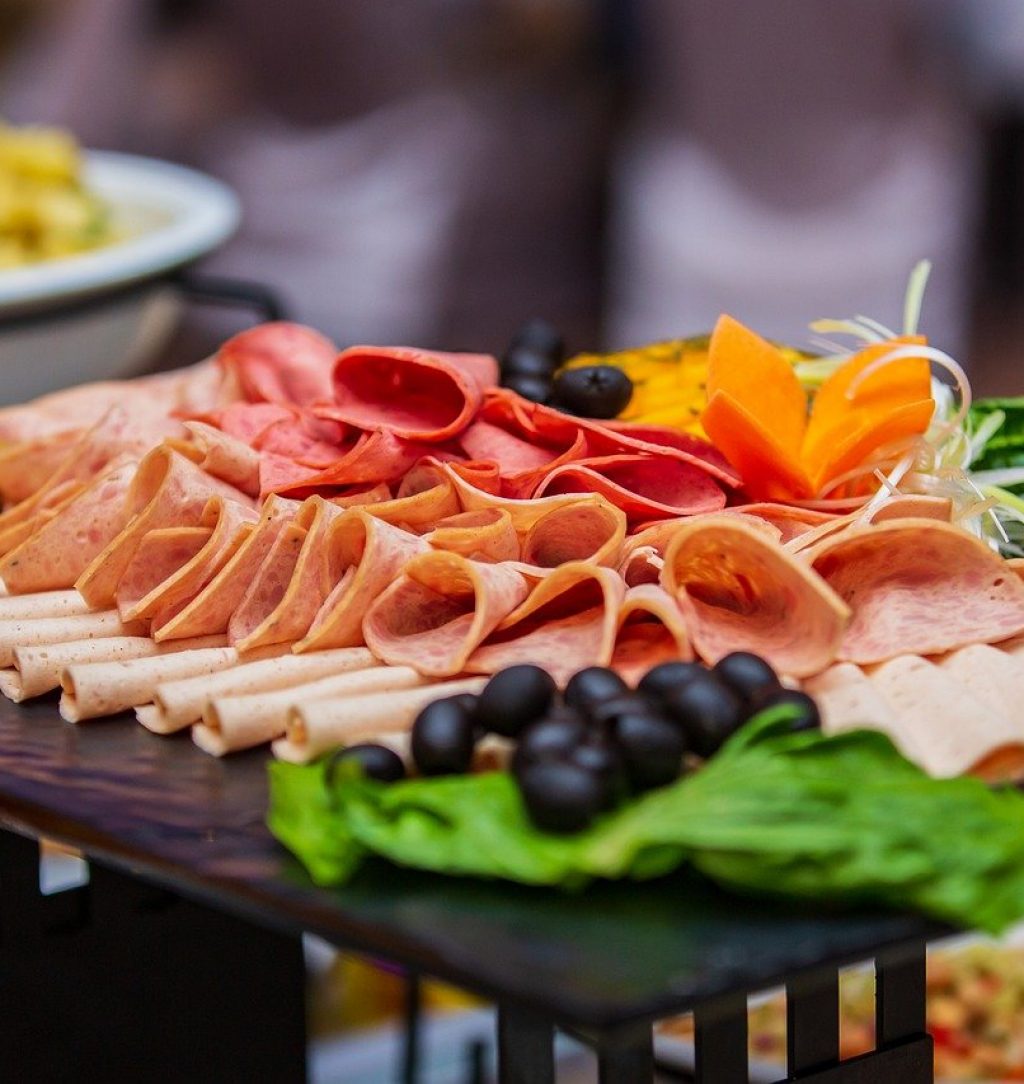The Flavors of Tefillah:
A Purim Seudah Dvar Torah in Five Courses
First Course. Finding the Key.

Food for Eating:
The table is set with Challot that are baked in the shape of a key. (If this is not practical, perhaps there are rolls and breadsticks arranged on the table in the shape of a key, or a key shape cut into a large slice of bread).
Food for Thought:
I first began to make key challahs for Purim because I liked the idea of annoying my kids with a bad pun, the reminder that Yom Kippur was like Purim: “kippurim = key Purim.” However, the truth is that the idea of keys on Purim is very deep. Gemara Megillah (10b-11a) lists 13 rabbanim who each bring a different pasuk from Tanach as an introduction to their teaching of the megillah. (Btw: Is it exactly thirteen because that’s the gematria of echad, and all these explanations are refractions of one truth?) The Or Gedalyahu (Moadim p.97) explains that each of these psukim functions as a key which opens up the megillah. For this reason, the language of the Gemara is that each Rabbi “opened up an opening” with his pasuk. The pasuk is a filter, focusing our thoughts, and opening up the text.
The filters we choose to use to experience life, and to learn, are important. The key we choose can change our entire experience. For this suedah, the key we’re trying on is the key of Rav Matnah, which is also the one chosen by Rambam in Yad HaChazakah. It is the pasuk found in Devarim 4:7: “For which is a great nation that has a G-d Who is close to it, as Hashem, our G-d, is whenever we call to Him?” According to Rav Matnah, the key to understanding the Megillah is tefillah, our ability to call out to Hashem, and His readiness to answer.
Rav Moshe Wolfson adds another dimension to the idea of the keys of Purim. Mordechai’s Hebrew name is Petachya (from the word petach, to open, see Menachot 65a). Rav Wolfson says that Mordechai himself is our key on Purim, together with Esther. In this month, the highest gates of ratzon are prepared to be opened, and it is Mordechai and Esther who give over to all of klal yisrael the keys. This month, we join our tefillot to theirs.
In this course, as we are koveya seudah on that distinctly human food, bread, we are invited to set an intention: to experience through the course of the seudah some flavors of that distinctly human activity, tefillah.
Second Course. Process is Paramount.

Food for Eating:
Bowls with the different components of fish tacos are spread out on the table. Perhaps there are corn tortillas and seasoned fish, slaw, avocado, tomato, red onion and fish sauce. Whatever items suit your taste. Each participant is invited to create their own.
Food for Thought:
Purim is a holiday which focuses on experience. The Sfat Emet draws this out in an amazing perush on the opening words of the fourth perek of the megillah, “And Mordechai knew.” The Sfat Emet tells us that Mordechai knew, not just the entire plot against the Jews, and the danger we were in, but also that the salvation was sure to come. In the end, Hashem would save us. And yet, as the pasuk continues, he put on sackcloth and ashes, went into the center of the city, and cried a loud and bitter cry. Mordechai was a tzaddik, with ruach hakodesh that told him that everything would work out in the end. And still he cried, because he knew that when salvation came, it would come only through the prayers of Am Yisrael. There is no skipping the process. There is no contradiction in having perfect faith, and also crying out to Hashem. The process of crying out is a necessary part of bringing the geulah.
Esther is a sefer that focuses on action. The greatest tefillah in the megillah comes not through words, but through action, through the three-day fast of the nation. The megillah reveals Hashem as He speaks to us through the world around us, and the chag of Purim is similarly focused on experience. We give gifts, we listen, we eat, we get drunk. This is a day which is not about intellectual knowledge, but about experience.
In this course, we can understand, just by looking at the table, how all the pieces fit together, and form one whole taco-eating-experience. But we will have nothing yummy in our stomachs unless we go through the process of putting it all together. This is what Mordechai understood. The flavor of tefillah comes from savoring and experiencing the process.
Gemara Megillah 4a records us how R’ Yehoshua by Levi taught that we read the megillah once in the night, and once in the day. The gemara then goes on to record how the students misunderstood their rebbe. They thought we were supposed to read it at night, and learn it during the day. R’ Chiya bar Abba explains that, no, we are meant to read it, simply to read it, twice. Once at night and once in the day. Because the purpose of the reading is to bring us to a place where “my soul will sing to You, and not be stilled, Hashem my G-d, forever will I thank You (Tehillim 30:13).” We read the megillah twice because we want the experience. As Rabbi Zvi Engle points out, the megillah doesn’t change, but we do. The experience is different in the day and in the night.
In this course, as we enjoy the process of picking out and putting together the ingredients that make a delicious taco, we are invited to set an intention to be mindful of appreciating and enjoying the everyday processes that are the true substance of our life.
Third Course. Holding Contradictions.

Food for Eating:
Delicious morsels of sweet and sour chicken, served over rice, of course.
Food for Thought:
It’s one of the most suspenseful moments of the megillah. One chapter after Mordechai dons sackcloth and ashes, and after three days of fasting, Esther is ready to approach Achashverosh. Or, at least, she thinks she is ready. She dons the garments of royalty, but then the pasuk says, “she stood in the inner courtyard of the king’s palace facing the king’s palace (Esther 5:1).” Her forward progress is halted. She is stopped there.
The Gemara (Megillah 15b) poignantly describes the scene. Esther had dressed herself physically in royal garments and spiritually in ruach hakodesh. However, just as she is about to reach her goal, the inner palace of the king, the Divine Presence leaves her and she doesn’t know why. She is plagued by self-doubt and uncertain about her path. Reaching out, to try to understand her plight, Esther finds the words of Tehillim 22:2, and cries out, “My G-d, My G-d, why have you forsaken me?” There is a poignant internal contradiction to her words. She is crying out to Hashem, trusting that He will listen and hear, even as she is expressing her feelings of abandonment and disconnect.
Sometimes the flavor of tefillah is sweet and sour. We want to cry out to Hashem and yet we feel disconnected. We know Hashem loves us, but we cannot understand how He could have orchestrated the events of our lives. We hold both emotions within ourselves, and that is the way it is supposed to be at times. All through Tehillim, we can find tens if not hundreds of pesukim that express the same kind of contradictory emotions. We can reach out to them for support and make one or two of them our own if we want to.
When we are stopped by the contradictions of our lives, and the contradictory emotions that swirl within us, Esther is our inspiration. Life shook her, but Esther moved forward. From the contradictory facts of her life, this Jewish princess who lived most of her life in the palace of the evil king, saved us all. She imparts to us the flavor of embracing the contradictions and moving forward.
In this course we are invited to experience how two opposite tastes, sweet and sour, can be combined and held together, to form a dish with a flavor profile much deeper than either one of those flavors on their own. We have the opportunity to set an intention to accept our own contradictions, and appreciate the depth they give us as people and in our relationship with Hashem.
Fourth Course. We Are Not Alone.

Food for Eating:
The charcuterie board becomes our new centerpiece. It is a board that combines together in a beautiful way different meats with accompaniments like dried fruits or pickles and sauces. The exact contents are completely adjustable according to whatever is available.
Food for Thought:
It is in the sixth perek that the megillah finally turns around. V’nahafoch hu. Haman is ordered by Achashverosh to seat Mordechai on the king’s horse in royal clothing and lead him around. It seems to be a scene between Mordechai and Haman. However, the midrash (Esther Rabbah Vilna, Parsha Yud) expands the moment, adding depth by once again borrowing the words of Tehillim. Perek lamed is used to express the depth of the moment, the universality of a scene that at first glance seems to be just about Mordechai and Haman. The midrash envisions Mordechai singing Hashem’s praises in psukim 2-4: “You have drawn me up and not let my enemies rejoice over me.” In psukim 5-6, the picture is expanded to include Mordechai’s students singing as well, “in the evening we lie down weeping, but with dawn, a cry of joy!” In psukim 7-8 the picture expands to include even the song of Haman, who against his will admits, “I said in my serenity, ‘I will never falter.’” Esther then becomes part of the picture (9-10): “To you Hashem, I would call.” All of Klal Yisrael finally joins in with psukim 11-12: “You have transformed my lament into dancing.” The last line is reserved for ruach hakodesh, which even in galut will “sing to You and not be stilled.”
The experience of galut and geulah is both personal and national. Even in galut we emphatically do not allow Haman to define our narrative. Haman calls us “one nation, scattered and dispersed (Esther 3:8).” But Esther, who was hiding her identity from everyone close to her and was perhaps the most isolated Jew of her time, refused to believe it. When the time came to risk her life, she knew clearly that her strength would come from all of us together. Before she approached Achashverosh, her request was that the nation, as a whole, would fast together. This would give her strength.
As we partake of the charcuterie board, we can see that the beauty of it comes from how each unique taste has its place in the overall experience, but the fun of it comes from having all of it together. Yes, tefillah is personal. But it is also universal and communal. Our strength comes from being able to reach our to everyone around us. We are all together in this galut. We never have to do it alone.
In this course we are invited to notice how numerous individual taste profiles can join together to make one whole experience that is greater than any one part. We can take this opportunity to set an intention to reach out to and enjoy the many different personality profiles of all the people who make up our world. We are all singing together to Hashem.
Fifth Course. Finding The Center.

Food for Eating:
Dessert is a pairing of merangues, which look substantial but which melt into nothingness when you eat them, alongside desserts that are filled with something sweet and substantial in the center, such as hamentaschen.
Food for Thought:
The Maharal tells us that if we want to find the most powerful part of something, the part which expresses essence, we need to look to the center. The center of anything will tell us what it’s all about. The center word of the megillah is “she’elati, my request (5:8)”. If we count all the psukim in the megillah, the center pasuk is, “Then Esther replied and said, ‘My petition and my request.’ (5:7)” It’s a pasuk that isn’t even a full sentence. Instead, it expresses a process. Esther is responding to the events around her by discovering and articulating a request. And that request is the center. The essence of the megillah is the requests that we make of Hashem. Our avodah on Purim is exploring what we want and why we want it.
There is a connection here to Haman and Amalek. Amalek is antithetical to everything we stand for. We exist on a path, in a world that was created by Hashem to move forward towards a purpose. It is exactly on that path, “baderech” that the Torah mentions twice that Amalek attacked us (Devarim 25: 17-18). Instead of moving forward, Amalek lives in the moment, specifically in the fatalism and the despair of the moment. Whatever is, is what will be; once you begin to fall, you will always be falling. Haman’s wife tells him, “You will surely fall before him (Esther 6:13).”
Just as even after we defeated Amalek we are still commanded to wipe out his memory, so too, even after Haman is hung, Esther is still involved in erasing all the mess he left behind. Esther describes how she wishes to wipe out “the evil thoughts of Haman that he thought on the Jews (Esther 8:3).” The Sfat Emet describes how the word “on” is intentional. Haman jumped onto and into our heads. There is a vestige of Amalek that is left in our minds. And this is where the work comes in, wiping out the remembrance of Amalek. To erase Amalek is to free ourselves from the thoughts of Amalek.
As we conclude the seudah, we can return to the idea of keys, specifically we can think about which key opens up our deepest selves. What is our center, and what is it that we want at our core? If we are drinking wine, we can think about what is revealed in our drunken state. We can include our whole body in the experience of finding our core, and discover who we are through joy and food and drink and dance and song and the company of our friends and loved ones.
In this course we can contrast different sweet sensations. The merangue, which seems so hard and stable on the outside, melts into nothingness at its core. The hamantaschen has something much more substantial hidden inside. We can take the opportunity to set an intention to try to taste within ourselves, not the parts of us which are fleeting, but our own sweet inner beauty and connection to Hashem.
Sources:
Rabbi Zvi Engel, Davening for the Dawn: Tefila in Megilat Esther.
https://rabbizviengel.org/tag/purim
Mrs. Michal Horowitz, Purim & Prayer: The Tremendous Power of The Eye of The Storm
https://www.yutorah.org/sidebar/lecture.cfm/1028028/mrs-michal-horowitz/purim-prayer-the-tremendous-power-of-the-eye-of-the-storm/